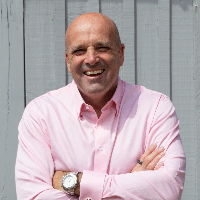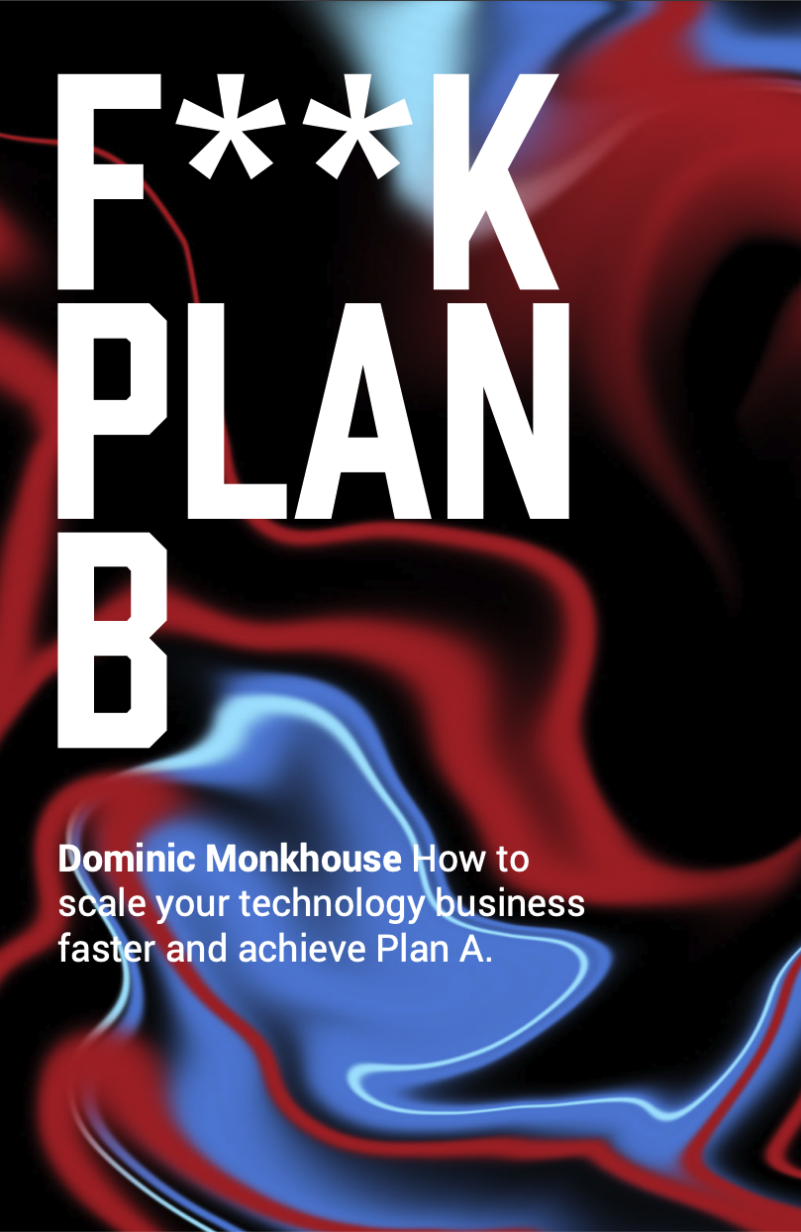THE BEST TECHNIQUE FOR FEEDBACK. STOP START CONTINUE.
 Author: Dominic Monkhouse
Author: Dominic Monkhouse
Contents
What is ‘Start Stop Continue’?
What’s the best initial approach to ‘Stop Start Continue’?
How do you run a ‘Stop Start Continue’ feedback exercise?
How do you go deeper into a ‘Start Stop Continue’ session?
How should team members act on feedback from a ‘Start Stop Continue’ exercise?
How often should ‘Start Stop Continue’ happen?
What are the benefits of ‘Start Stop Continue’ retrospective?
Do you struggle with giving feedback? You’re not alone. Many of the CEOs I coach find this difficult. There’s a natural reluctance to ‘go there’ and confront performance issues in their team. How about receiving feedback from others? Is that just as bad? Maybe it’s because these conversations are uncomfortable, or there’s insufficient psychological safety in the team for an open, frank discussion. Either way, this issue will hamper personal development – both yours and your team’s. No company will outperform its leadership team. There is a reason Rockefeller Habit number one is ‘the executive team is healthy and aligned’. It needs to be fixed.
I’d like to introduce you to a neat little exercise that might just be the solution – ‘Start Stop Continue’ It’s something I use with Executive Teams who need to strengthen vulnerability-based trust. We build it into their routines, and it becomes a regular way of feeding back to one another. The beauty of ‘Stop Start Continue’ or ‘Start Stop Continue’ or just SSC is the way it helps people both give and receive feedback. Clients have told me that it’s transformative. Let me tell you why.
What is ‘Start Stop Continue’?
You may have come across the stop, start, continue retrospective in its agile context. At one level, it can be used for a post-mortem on recent activity. It’s a way of analysing, in the last cycle, what went well and what didn’t. Executive teams take it out to their functional teams when they’re preparing for annual planning to work out their action plan and what they need to be doing over the next year.
In this blog, I’m focusing on using the ‘Start Stop Continue’ model to build psychological safety and drive performance. High-performing teams of ‘A Players’ will welcome and want this feedback. It’s what differentiates them from B and C Players. They get joy from what they do and want to get even better. Mastery is the motivation here – and they won’t achieve this without open and honest feedback.
What’s the best initial approach to ‘Stop Start Continue’?
If you’re starting from a place of zero trust, my advice is to take it slowly. Don’t march in demanding no-holes-barred take-no-prisoners feedback. In a group setting, start by getting the team members to write all the things they think are amazing about each other on post-its or sticky notes – the ‘Continue’ part of the exercise. By introducing a round of praise first, you’re starting on a positive note and encouraging the easiest conversations to get everyone used to appraising each other.
How do you run a ‘Stop Start Continue’ feedback exercise?

Once everyone has relaxed into the session, broaden out the ‘Start Stop Continue’ exercise. Give each person a sheet of paper with their name at the top and split it into three sections. They pass it to the left and people write something down for each of the three categories. ‘Stop’ – something that’s undermining the person’s ability to be the best they can be and having a negative impact on team performance. ‘Start’ – suggestions for things that might make a more significant contribution to the team and ‘Continue’ – the good stuff to carry on with, the behaviours encouraging a high-performance team culture. This goes around the table and eventually comes back to the original person.
How do you go deeper into a ‘Start Stop Continue’ session?
Now each team member has an action plan and peer review all rolled into one. At this point, I ask if anyone’s prepared to share what they’ve written down by giving that feedback face-to-face. This makes the effects of ‘Start Stop Continue’ ideas more profound, building trust, honesty and psychological safety. It’s like deepening the stretch of a muscle in yoga.
As CEO, volunteer to go first. Encourage one of the team members to speak their ‘Start Stop Continue’ feedback aloud to you and then thank them. Don’t get defensive. (Extremely difficult!) Take it on the chin. You may want to ask the person speaking up to be your ally. Perhaps they could tell you when you’re doing the thing they want you to stop. Kick you under the table maybe, or throw a piece of fruit at you! I remember when I travelled to our quarterly off-sites at Peer 1. It would mean travelling from the UK to the west coast of America. It would get to 4 pm, and I was so delirious with tiredness I would always pick a fight with the CEO. It became a standing joke. As the clock ticked towards 4 pm, people would watch me expectantly, calling out my behaviour.
How should team members act on feedback from a ‘Start Stop Continue’ exercise?
I suggest that each person take their ‘Start Stop Continue’ sheet to their functional team and talk it through with them. There’s no better way of demonstrating vulnerability. It will also help your team to help you, which can be hugely valuable to personal development.
The results of ‘Start Stop Continue’ can kick off a discussion that leads to a team charter. The whole team identifies the behaviours they value and commits to them. They also influence any work that you’re doing on your Culture Canvas. Remember, your company can’t outperform its Executive Team. Going through this self-introspection together – working out how you want to show up for each other and what you’re going to do differently – will ensure you don’t undermine the impact that you seek to have.
I used the ‘Stop Start Continue’ technique for my first-ever coaching client. It was clear that this individual had broken relationships with many people in his organisation. So I asked him to take ‘Start Stop Continue’ examples back to these 20 people and go through it with them. It was hugely positive, generating some really useful feedback. The people in question were amazed that he had come to them to ask for input. They were more than happy to give it and, even better, to help him with the behavioural changes he needed to make. He’s still there three years later and has been promoted twice.
How often should ‘Start Stop Continue’ happen?
My recommendation? Use ‘Start Stop Continue’ at least every six months. If not quarterly. The more regular you make it, the more benefits you will see.
What are the benefits of ‘Start Stop Continue’ retrospective?
So what are these benefits? There are many:
Builds ‘radical candour’ and psychological safety
‘Radical Candour’ is a phrase coined by Kim Scott in her best-selling book of the same name. Her pivotal moment came when she was given brutally honest feedback by Sheryl Sandberg when she was working at Google. After a presentation that had gone well, Sandberg took her aside. She congratulated her but then told her she’d said ‘um’ a lot. To drive the point home, she said this made her sound less smart, even though she very obviously wasn’t, and suggested she see a speech therapist to fix it.
When Kim reflected on this encounter, she defined her theory of radical candour – a skill that requires bosses simultaneously to care personally whilst challenging their employees directly. You’re giving this feedback in the context of ‘How can I help you have the impact you deserve and be the best version of yourself you can be’.
Sometimes it might be a case of teams needing to be less polite with each other. There may be things that have remained unsaid for a long time. This gives people the opportunity to catch up with some of that debt and stay ahead of it.
I suggest that once a senior leader has completed ‘Stop Start Continue’ with the executive team, it will show vulnerability and build trust in their team if they then share it with them. This sets the scene to then cascade down the exercise throughout the organisation.
Makes feedback a habit

Giving ‘Start Stop Continue’ feedback is a good habit to get into. And like any good habit, it takes practice and perseverance. This is about team members coming together often and getting used to having challenging conversations. The first time you do it, it might be a bit toe-curling. But keep at it for your personal development, and you’ll find things coming out into the open and getting fixed. After all, many behaviours are subconscious, and they won’t change unless they’re openly acknowledged.
Encourages self-awareness
At Peer 1, we held a ‘Stop Start Continue’ session with the directors. One of the guys said to me, ‘Dom – you never answer my phone calls when I ring you.’ I said, ‘Really? I have no recollection of you ever ringing me. Do you leave a message?’ He answered no, so I asked him which number he was calling. It turned out it was an internal extension that I never looked at. We quickly determined that he should call my mobile, but this conversation made quite an impression on me. Here was one of my colleagues feeling like I was ignoring him or being dismissive. And I just had no awareness of this at all.
- REFINE LEADERSHIP SKILLS
- STRATEGIC DIRECTION
- GREAT PLACE TO WORK
- EXECUTION FOCUS
- TRANSFORMATIONAL CHANGE
- EXIT READY BUSINESS
It struck me that we go through our days in the context of the movie we’re running in our heads. All our interactions are viewed through filters, and sometimes, this needs to be stripped away. It’s so important for a high-performing team to work on self-awareness in this way.
Increases trust
I often reference Patrick Lencioni’s ‘Five Dysfunctions of a Team‘ during these ‘Start Stop Continue’ exercises. He identified the pyramid of reasons that result in organisations not getting the results they’d like or feel is due to them. At the top was inattention to results which was built on avoidance of accountability. But the very foundation of the whole pyramid was the absence of trust. Building trust should be a priority in any Executive Team.
Replaces annual performance reviews
Annual appraisals. God, how I hate them! Ditch them and replace them with Start Stop Continue retrospectives. This will provide you with a ready-made personal development plan that’s constantly evolving and changing. It’s genuinely transformative. Once completed, you can take your ‘Start Stop Continue’ sheet back to your office, put it on the wall, and act on it daily. Here are the things your colleagues have told you that are undermining your impact. After all, feedback is a gift. Make sure you use it.

Looking to scale your business?
Answer 10 *challenging* questions and discover if your business is going to crush it or get crushed.
Written by business coach and CEO mentor Dominic Monkhouse, read more of his work here. Read his new book, Mind Your F**king Business here.